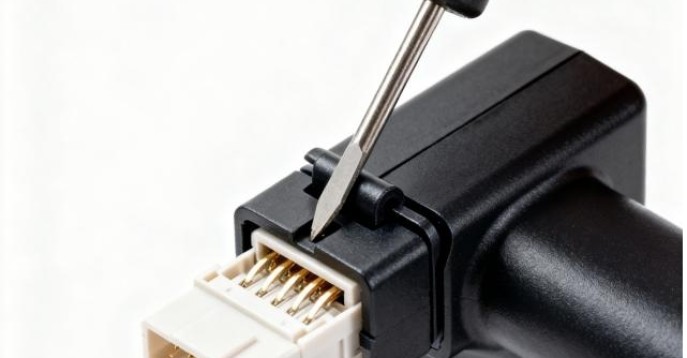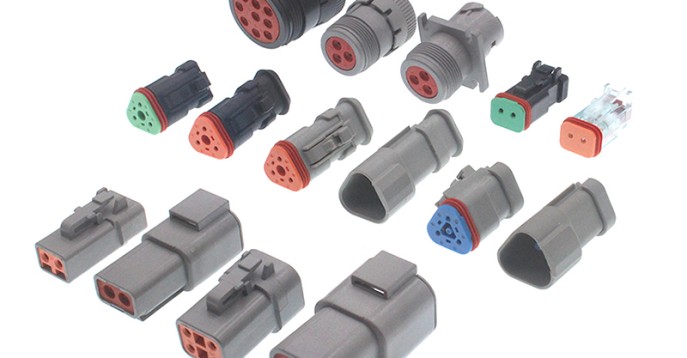The process stipulates the “method, process and goal of doing things”, that is, what preparatory work (input) is required to do a thing, what is the processing link of the thing (process), and what expected results will be produced ( output). The three elements of the process – input, process, output!
Accurately grasping the development process of wire harness products helps us to understand the design of wire harness products from a global perspective.
● Wire harness processing flow
Whether it is in the main engine factory or the parts factory, the wiring harness processing process must be familiar to the wiring harness engineer. For the wire harness processing process, different wire harness factories may have different process names, but they will not be separated from the following main process nodes, which are: incoming material inspection and storage, off-line, crimping, sub-packaging, assembly, inspection (appearance / size / electrical inspection, etc.) and packaging.
Each process has input and output, that is, relevant documents need to be compiled to guide the production of the corresponding process, such as the end-of-line table to guide the end-of-line crimping process.
Note: The off-line table is the off-line and crimping schedule, which includes a variety of process parameters and requirements. In the wire harness production process, the off-line table is finally used to guide the operation of the off-line crimping process through the blanking and crimping process card, and to guide the production process in the workshop.
Each process also needs to be inspected. Only after the inspection is passed can the batch be carried out, and the process needs to be monitored at any time. For example, in the off-line process, the first piece needs to be produced first, and the parameters such as the line length and stripping head of the first piece have passed the inspection before the batch off-line can be carried out.
● Off-line (cutting) process
Definition: The so-called off-line is the process of cutting, stripping and bundling wires and conductors of different specifications according to the process documents according to the design drawings.
Process: Prepare materials → adjust equipment → first article inspection (measure wire length, stripping head) → mass production (100% self-inspection in the middle and final inspection) → organize wires → wait for turnover.
Inspection: During the off-line process, process parameters such as wire length, full-stripped head and half-stripped head length, and opening length need to be measured.
● Crimping process
Definition: The so-called crimping is the process of bringing wires and terminals together. Process: Prepare materials → adjust equipment → make the first piece → first piece inspection (micrometer to measure crimping height and crimping width) → mass production (100% self-inspection of crimping quality in the middle and final inspection) → waiting for turnover
Inspection: The crimping process needs to measure whether there is an R angle, whether the visible range of the core wire and the insulation is within the tolerance range, whether there is damage to the crimping part of the core wire and the crimping part of the insulation, and the crimping twist.
● Subpackage (prepackage) process definition:
The so-called pre-assembly is the process of assembling the off-line or crimped semi-finished products with sheaths, pipes, rubber parts and other parts into new semi-finished products.
Process: Prepare all materials → plug in, listen to, and pull back three times → install self-locking
Inspection: Complete the self-inspection according to the process of one plug, two listens and three pulls.
● Assembly (final assembly) process
The so-called assembly is the process of combining off-line or crimped semi-finished products, pre-assembled semi-finished products with other materials into a finished wire harness. Tape or cable ties are bundled into a bundle, which is a wire harness.
● Inspection process
The inspection process mainly includes appearance inspection, installation accessories inspection, function inspection, 100% electrical inspection, and image inspection.
100% electrical inspection and appearance inspection are required for each finished product. Image inspection mainly inspects the wire harness with fuse box to determine whether the fuse and relay are plugged in correctly. The function inspection table is mainly used to detect the working status of the relay in the wire harness and the relay Whether it can work normally, there is also a need to detect the torque of the bolts in the fuse box.
● Packaging process
The so-called packaging is the process of tidying up the wires and packing them into boxes.
Stretch and seal the box→Bundling with nylon rope→Packing and placing neatly→Seal the box with tape→Paste the certificate and serial number→Paste the packing tape→Storage
Talking about the development and production process of wire harness products
--- END ---
LATEST NEWS














